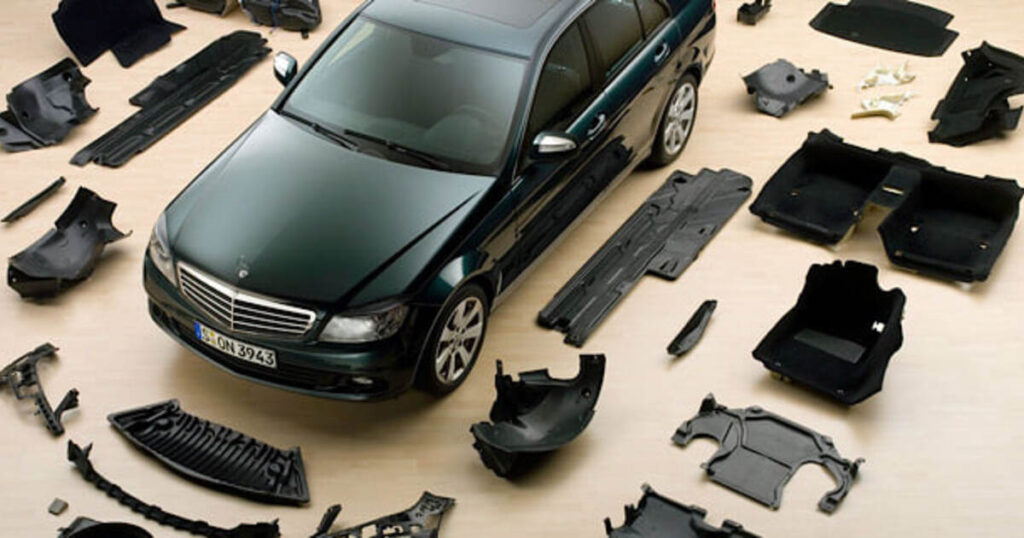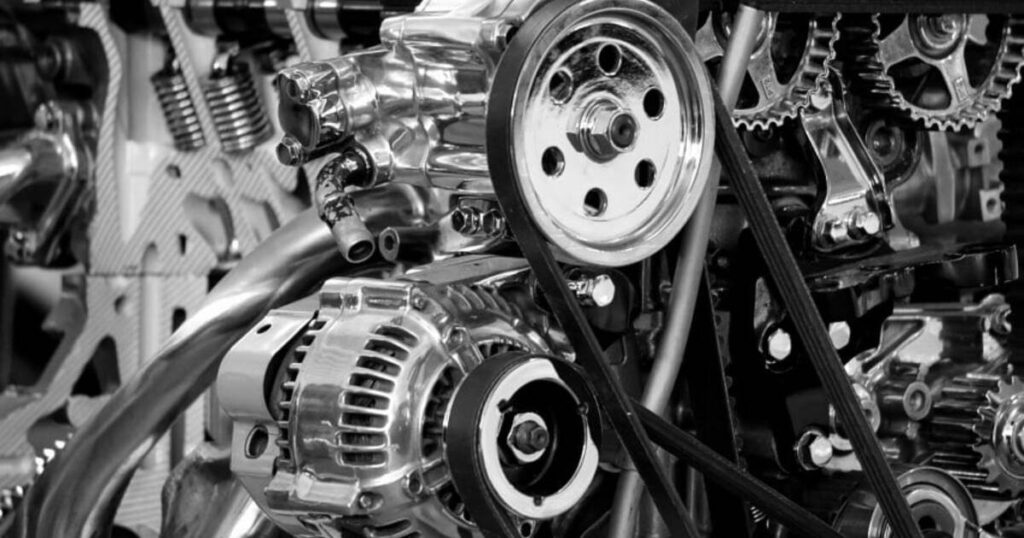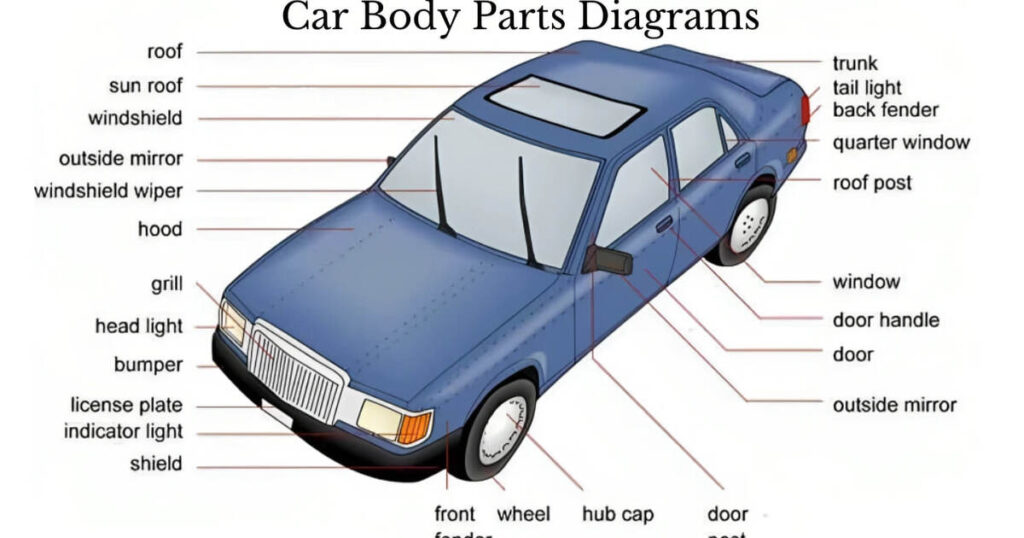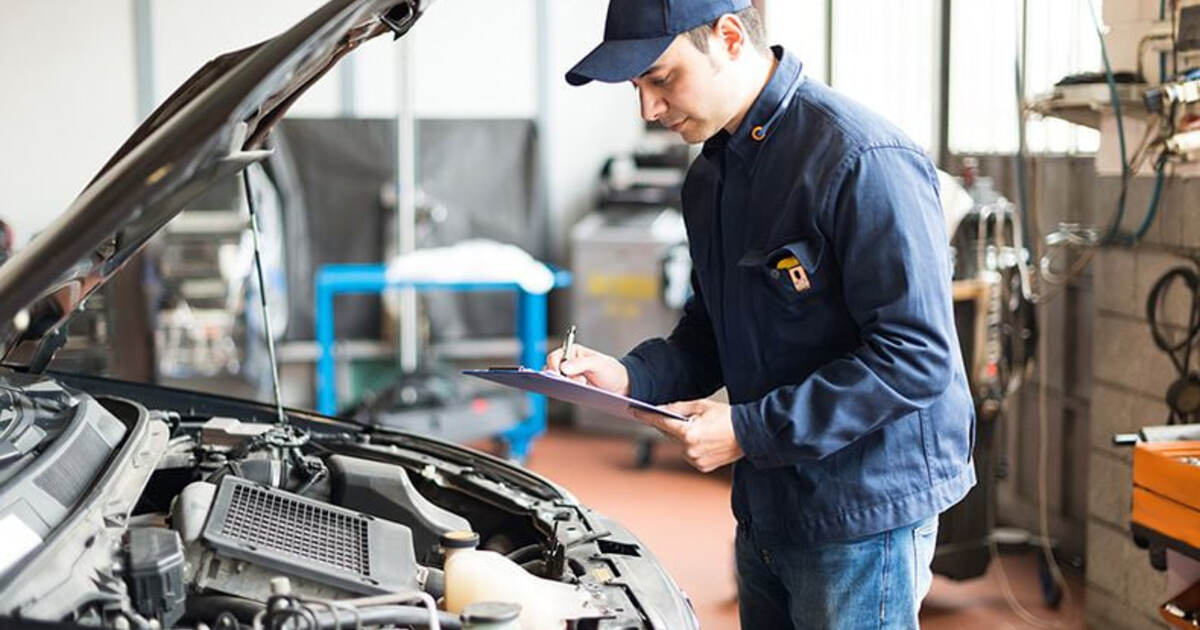The Best Ultimate Guide to Choosing Car Band Parts-2025. Car band parts are essential to your vehicle’s powertrain, helping it run smoothly and efficiently. These parts, often made from durable materials like rubber or Kevlar, work together to transfer power from the engine to other components, ensuring that your car operates as intended. Without them, your engine would lose its ability to run effectively, and your vehicle’s performance would suffer.
What Exactly Are Car Band Parts?
The Best Ultimate Guide to Choosing Car Band Parts. At their core, car band parts are flexible bands or belts that transfer rotational power between engine components. These include drive belts, timing belts, serpentine belts, and accessory belts, all vital for various mechanical functions. They provide essential power to critical engine components like the alternator, air conditioning compressor, water pump, and more. Their role might be subtle, but they are key players in ensuring your car’s engine stays in sync.
Why Are Car Band Parts Important for Your Vehicle?
The Best Ultimate Guide to Choosing Car Band Parts. Car band parts play an indispensable role in the functionality of your vehicle. They help keep various engine components functioning by providing the correct amount of rotational power, which ensures everything from electrical systems to cooling systems runs smoothly. A failure in any of these components can cause engine overheating, power loss, and costly repairs, so maintaining these parts is crucial.
The Role of Car Band Parts in Vehicle Performance
The Best Ultimate Guide to Choosing Car Band Parts. The condition of your car’s band parts directly affects its overall performance. Worn-out or damaged bands can lead to slipping, reduced power, and an inefficient vehicle. Conversely, maintaining these parts ensures optimal performance, better fuel efficiency, and a smooth ride. When your car bands are in top condition, your vehicle performs at its best, with fewer mechanical issues.
Drive Belt Bands: Powering Your Engine
Drive belt bands are the workhorses of your vehicle, powering essential components like the alternator, air conditioning compressor, and power steering pump. These belts often serve as the main power transfer route, channeling the engine’s rotational force to auxiliary systems, making them critical for everyday vehicle functionality.
Timing Belt Bands: Keeping Everything in Sync
Timing belts are designed to synchronize the camshaft and crankshaft movements, ensuring that the engine’s valves open and close at the proper times. These belts are crucial for the internal operation of your engine, and if they fail, they can cause catastrophic engine damage. Regular maintenance and timely replacement of timing belts are necessary for maintaining engine integrity.
Serpentine Belt Bands: The Versatile Workhorse
A serpentine belt is a long, continuous band that loops around various pulleys to power multiple engine components. Known for their durability and efficiency, serpentine belts power everything from the air conditioning system to the alternator. Their versatile nature makes them a key element in modern vehicles.
Accessory Belt Bands: The Unsung Heroes
Accessory belts, also known as auxiliary belts, drive smaller components like the air conditioning system, power steering, and sometimes the water pump. These belts help maintain optimal car performance, though they’re often overlooked in maintenance routines. They may not always be in the spotlight, but they are vital for smooth operation.
How to Identify the Right Car Band Part for Your Vehicle
Know Your Vehicle’s Make and Model
Before purchasing any car band part, knowing your vehicle’s make, model, and year is essential. Different cars require different sizes and specifications for their belts, and having this information ensures compatibility. This step saves time and money by narrowing down your options.
Consult Your Owner’s Manual for Band Part Specifications
Your vehicle’s owner’s manual contains critical information about the parts required for your car. Manufacturers typically list the correct specifications for every type of belt and band in the manual, so using it as a reference can help you avoid buying incompatible parts.
Understanding OEM vs. Aftermarket Parts
When choosing car band parts, you’ll decide between Original Equipment Manufacturer (OEM) parts and aftermarket alternatives. OEM parts are made by the car’s manufacturer and are designed to fit perfectly. Aftermarket parts, however, are made by third-party manufacturers and may offer more variety, often at a lower cost. Weighing the pros and cons of each is crucial.
Why Compatibility Is Crucial for Optimal Performance
Choosing the right part that fits perfectly is more than just a matter of convenience; it’s about ensuring your vehicle operates safely and efficiently. An incompatible or incorrectly sized part can cause significant damage, leading to higher repair costs and unnecessary downtime.
Signs Your Car Band Part Needs Replacement
Common Symptoms of a Worn or Damaged Band Part
A worn or damaged band part often presents through signs such as squeaking, slipping, or reduced power. These signs indicate that the band’s effectiveness has diminished and that it needs to be replaced. Ignoring these symptoms can lead to severe engine failure.
Noises That Signal a Failing Car Band Part
Unusual noises like squealing or high-pitched whining indicate that a car band part is deteriorating. Such noises typically happen when the belt is slipping or not correctly aligned. Identifying these sounds early can help prevent more significant problems down the road.
What Happens If You Ignore a Faulty Car Band Part
Neglecting to replace a damaged band part can lead to total failure. A snapped timing belt, for example, can cause irreparable damage to the engine, resulting in expensive repairs or even the need for a complete engine replacement. Timely replacement is key to preventing such catastrophic failures.
How to Inspect Your Car Band Parts
Step-by-Step Guide to Inspecting Drive Belts
Inspecting a drive belt is straightforward. Begin by checking for visible signs of wear, such as cracks or fraying. Then, gently press the belt with your finger to check the tension—if it feels loose, it may need tightening or replacement. Don’t forget to check the pulleys to ensure they are in good condition and aligned.
Visual and Physical Signs of Wear and Tear
Inspect your bands for visual signs of damage, such as cracks, glazing, or excessive wear. Physical signs like fraying edges or missing chunks of material can indicate that the band is close to breaking. Feel the band for any irregularities that could affect its performance.
How to Test Band Parts for Tension and Friction
Test the tension of your car band by pressing down in the center of the belt. If you can quickly push the belt more than a quarter inch, it’s too loose. Friction should also be tested by gently pulling the belt while in motion to ensure it’s not slipping.
Choosing Between OEM and Aftermarket Car Band Parts

The Pros and Cons of OEM Car Band Parts
OEM car band parts are specifically designed for your vehicle, ensuring perfect fitment and optimal performance. The downside is that they are often more expensive than aftermarket parts. However, for those who prioritize quality and reliability, OEM parts are the safest bet.
Why Aftermarket Car Band Parts Might Be the Better Option
Aftermarket car band parts often provide more affordable alternatives and a wider range of options. They are usually made to meet or exceed OEM standards, though they may not always match the original’s quality. For cost-conscious drivers, aftermarket parts can provide a reasonable compromise.
How to Weigh the Cost vs. Quality Tradeoff
When deciding between OEM and aftermarket parts, it’s essential to consider the long-term value. While aftermarket parts might be cheaper, their quality may not always meet OEM standards, potentially leading to faster wear. Evaluate your priorities—cost savings or ensuring the highest quality for your vehicle.
Material Matters: Which Band Part Material Is Best for Your Car?
Car band parts are made from various materials, including rubber, Kevlar, and composite materials. Rubber is durable and cost-effective but can wear out faster under high stress. Kevlar, on the other hand, offers superior strength and longevity, making it an excellent choice for high-performance vehicles. Composite materials balance cost and durability, making them ideal for most standard cars.
How Material Affects Durability and Performance
The material of the band part plays a significant role in its performance and lifespan. Rubber bands may stretch or degrade faster, whereas Kevlar and composite materials offer superior resistance to wear and tear, making them ideal for vehicles that undergo intense usage.
Choosing the Right Material for Your Driving Conditions
Consider your driving environment when choosing materials. For example, if you live in an area with extreme temperatures, opting for a belt made from high-quality rubber or composite material can prevent premature wear. If you often drive in harsh conditions, investing in a Kevlar band may be worth the added cost.
The Impact of Weather and Driving Conditions on Car Band Parts
Extreme temperatures and humidity levels can drastically impact the longevity and performance of your car band parts. High heat can cause rubber to crack, while cold can make the material brittle and prone to snapping. Humidity can accelerate wear, making regular inspections necessary for vehicles in these climates.
Driving in Harsh Conditions: Extra Care for Your Car Bands
If your car is often driven in harsh conditions, like off-road environments or heavy rain, it’s essential to inspect the bands regularly. Off-road driving can add extra strain on belts, leading to premature wear. If you frequently drive through extreme weather, investing in premium-quality bands may prevent more frequent replacements.
Seasonal Checks: Why You Should Inspect Your Band Parts Regularly
It’s wise to inspect your car band parts at the beginning of every season, especially before winter or summer. Temperature fluctuations can wreak havoc on materials, and regular checks will ensure that the belts are functioning optimally throughout the year.
How Often Should Car Band Parts Be Replaced?
Car band parts generally need replacement every 60,000 to 100,000 miles, depending on the type and material. However, some vehicles may require more frequent changes, mainly when used in harsh conditions.
Factors That Affect the Lifespan of Your Band Parts
The lifespan of a car band part is influenced by several factors, including driving habits, climate, and maintenance practices. Regular vehicle checks, smooth driving, and using high-quality parts can extend the lifespan of your car bands.
What to Do If You Can’t Remember When They Were Last Replaced
If you can’t remember when your car’s band parts were last replaced, it’s better to inspect them sooner rather than later. Most auto mechanics recommend replacing belts as a preventive measure, even if they don’t show immediate signs of wear.
Top Brands You Can Trust for Quality Car Band Parts
When looking for quality car band parts, go for reputable brands like Gates, Continental, or Dayco, which have established themselves as leaders in the automotive industry. These brands offer reliable, durable parts that are built to last.
How to Research Car Band Part Manufacturers
To ensure you’re choosing the right parts, research the reputation of different manufacturers. Look at customer reviews, product warranties, and independent testing to determine which brands are best known for producing high-quality car band parts.
What Makes a Brand Stand Out in the Car Part Industry
A standout brand will offer a combination of innovation, durability, and customer service. It should provide precise product specifications and a warranty that covers defects, ensuring that you’re getting the best value for your money.
Cost Considerations: How Much Should You Spend on Car Band Parts?
The cost of car band parts varies depending on the type, material, and brand. Drive belts typically range from $30 to $150, while timing belts and serpentine belts may cost more due to their complexity and importance. Remember to factor in the labor cost if you’re having a mechanic replace the part.
Cheap vs. Expensive: Does the Price Reflect Quality?
While it’s tempting to go for the cheapest option, remember that the quality of the car band part is just as important. Opting for a low-cost, low-quality part may result in frequent replacements and more significant repairs. Balancing cost and quality is essential.
How to Get the Best Deal Without Compromising Quality
To find the best deal, compare prices from different sellers and check reviews. Discounts on quality parts are often available, so take your time to find competitive prices without sacrificing durability.
DIY vs. Professional Installation: What’s the Best Option?
Replacing a car band part is a task that some car owners can handle, especially with the right tools and knowledge. A DIY replacement can save you money if you’re confident with basic car repairs and have a manual to guide you.
Step-by-Step Guide to Replacing a Car Band Part at Home
If you choose the DIY route, start by safely lifting the car and removing the necessary components to access the belt. Follow manufacturer instructions closely, ensure proper tension, and verify that all parts are correctly aligned before reassembling.
Why Professional Installation Might Be Worth the Investment
If you’re uncertain or don’t have the required tools, professional installation is a wise option. A skilled mechanic ensures proper installation and tension, reducing the likelihood of premature failure and avoiding future costly repairs.
The Role of Regular Maintenance in Prolonging Car Band Life
Regular checks on car band parts can help identify issues early, preventing costly breakdowns. It also extends the life of your belts, reducing the frequency of replacements and the risk of damaging other engine components.
Simple Maintenance Tips for Keeping Your Car Bands in Top Shape
To maintain your car’s bands, ensure they are correctly tensioned, clean, and aligned. Periodically inspect for wear and replace any parts that show signs of damage. Routine maintenance ensures that the bands continue to perform optimally.
Creating a Maintenance Schedule for Your Vehicle
Establish a maintenance schedule based on your car’s needs and manufacturer recommendations. Regularly check your car band parts at least twice yearly and replace them as necessary to keep your vehicle running smoothly.
Signs of a Poorly Installed Car Band Part

How to Identify Installation Errors After Replacement
After a band part replacement, check for any odd noises, vibrations, or slipping to ensure the belt has been installed correctly. Misalignment or incorrect tension can cause the belt to wear out prematurely and can even lead to component damage.
Common Mistakes That Could Cause Further Damage
Incorrectly aligning the belt or failing to adjust tension properly can lead to unnecessary wear and failure. Additionally, skipping checks for proper pulley alignment can exacerbate issues, leading to further damage.
What to Do if Your New Car Band Part Isn’t Working Properly
If your new band part is malfunctioning, first double-check its installation. If the problem persists, consult a mechanic to ensure everything is correctly aligned and the part is not defective.
How to Troubleshoot Common Car Band Part Issues
Belt slippage is a common issue that can arise due to improper tension or worn-out material. To resolve this, adjust the tension or replace the belt if it shows significant wear. Ensuring proper installation is key to preventing slippage.
Tension Problems: How to Fix a Loose Car Band
If your car band part feels loose, it may require tightening. Use a tension gauge to check if the tension is within recommended specifications. If it’s beyond adjustment, the belt should be replaced.
Belt Misalignment: What to Do When Things Aren’t Lining Up
Misalignment can cause the belt to wear unevenly and slip off its pulleys. Check the pulleys for wear or damage and ensure that everything is correctly aligned. If misalignment persists, consider professional help.
What Happens When the Tension on a Car Band Part Is Off?
If the tension is too tight or loose, it can cause premature wear, increase the strain on the engine, and reduce the efficiency of the car’s power transmission. Proper tension helps the car’s systems run optimally.
How to Check and Adjust the Tension Correctly
Use a tension gauge to check the belt’s tension against manufacturer specifications. If necessary, adjust the tension using the appropriate tools or consult a mechanic for assistance.
Why Alignment Is Crucial for Long-Lasting Car Band Parts
Proper alignment ensures that the car band part operates smoothly without any uneven wear. Misalignment can cause the belt to rub against other components, leading to failure. Always verify alignment before installing a new band part.
Upgrading Your Car’s Performance with Premium Band Parts
Premium car band parts are designed with high-performance materials with excellent durability and efficiency. They can withstand more stress and have a longer lifespan, making them ideal for performance-driven vehicles.
The Benefits of Upgrading to High-Performance Band Parts
Upgrading to high-performance band parts ensures smoother operation, better engine response, and fewer breakdowns. If you’re looking for peak performance and reliability, premium parts are the way to go.
When Should You Consider Upgrading Your Car Bands?
Consider upgrading your car bands if you’re experiencing frequent issues with wear if you drive in harsh conditions, or if you want to improve your vehicle’s overall performance. It’s an investment that pays off in the long run.
Car Band Parts and Their Impact on Fuel Efficiency
Worn-out band parts can cause the engine to work harder, decreasing fuel efficiency. When belts slip or are misaligned, it increases the engine load, causing it to consume more fuel.
Improving Fuel Efficiency with Proper Band Maintenance

By maintaining your car band parts in good condition, you reduce engine load, resulting in better fuel economy. Regular inspections and replacements help ensure that your vehicle runs more efficiently.
The Hidden Link Between Car Band Parts and Gas Mileage
Properly functioning band parts are integral to maintaining your vehicle’s optimal performance, which in turn directly influences gas mileage. When the bands are in peak condition, your car consumes fuel more efficiently, giving you more miles per gallon.
Troubleshooting Complex Car Band Issues
In some cases, multiple car band parts may fail simultaneously, often due to poor maintenance or extreme driving conditions. Diagnosing the root cause of such failures is crucial to prevent additional damage to other systems.
How to Diagnose Complicated Problems with Your Vehicle’s Bands
If your car bands are malfunctioning, conduct a thorough inspection of each band part. Look for misalignment, wear, and tension issues. A mechanic’s diagnostic tools can also help pinpoint more complex problems.
What to Do When Your Car Band Parts Don’t Seem to Last
If your car band parts fail, it may be time to switch to higher-quality materials or consult a professional for a more comprehensive diagnostic check. Consistent failures can signal a deeper issue that needs addressing.
Conclusion: Making the Best Choice for Your Car’s Band PartsChoosing the right car band part involves understanding your vehicle’s needs, selecting quality materials, and maintaining them regularly. Whether you opt for OEM or aftermarket parts, ensure compatibility, durability, and price alignment with your requirements.
Why Investing in Quality Matters for Long-Term Performance
Quality car band parts ensure that your vehicle runs smoothly, performs optimally, and remains reliable
